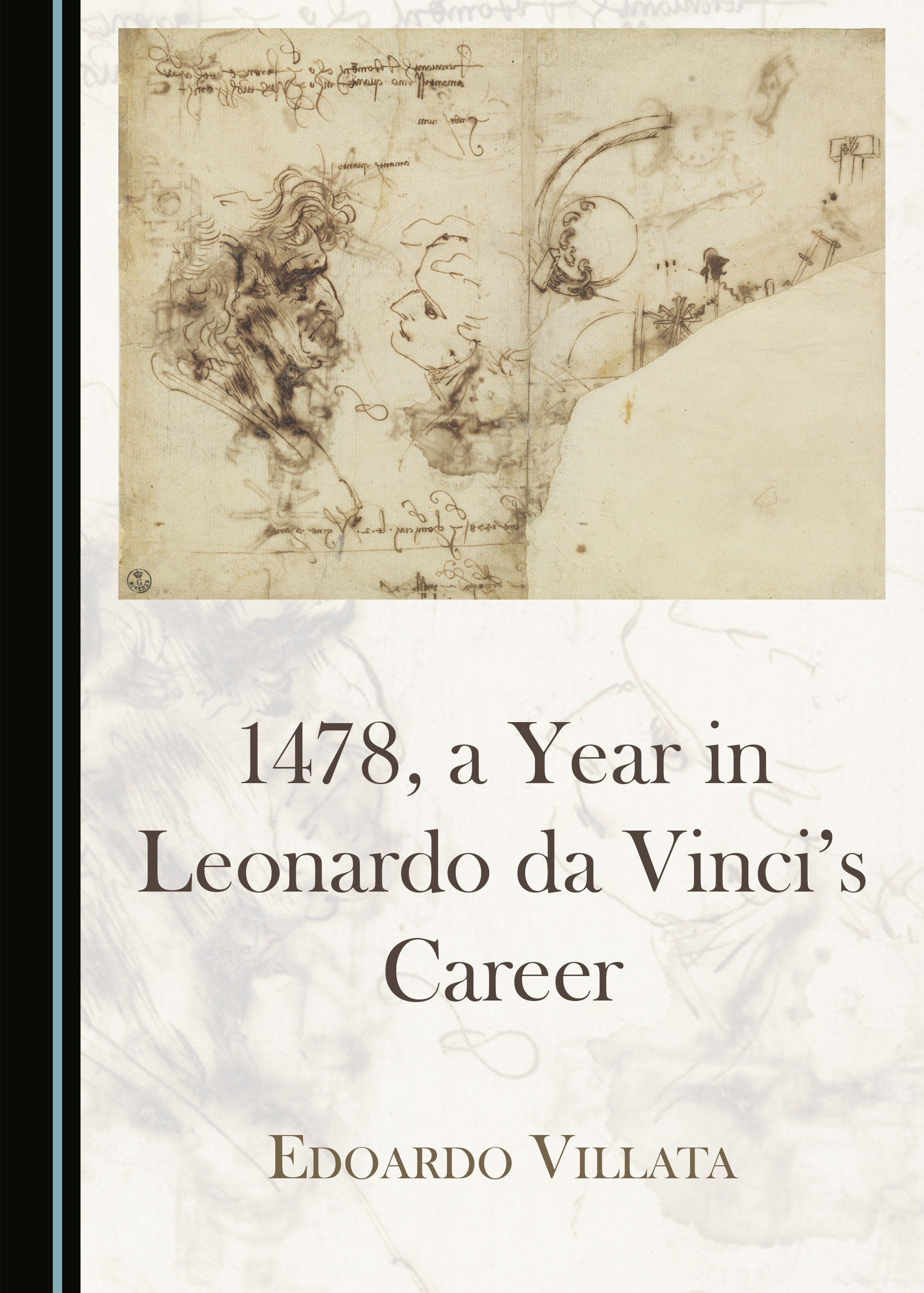Articles of interest
13th May 2021
Book in Focus
1478, a Year in Leonardo da Vinci’s Career

By Edoardo Villata
The last few years have been characterised by a new and deeper interest in Leonardo da Vinci’s youth and early work. On this subject, we can recall the publications by David Alan Brown (Leonardo da Vinci. Origins of a Genius, 1998), Larry J. Feinberg (The Young Leonardo. Art and Life in Fifteenth-Century Florence, 2011) and Laurence Kanter (Leonardo da Vinci. Discoveries from Verrocchio’s Studio, 2018), as well as Pietro C. Marani (Leonardo da Vinci. The Complete Paintings, 1999) and Carmen Bambach (Leonardo da Vinci Rediscovered, 2019), in which Leonardo’s early works were given a highly prominent position. Moreover, the restoration of works such as the Annunciation, the Baptism of Christ, the Adoration of the Kings (at the Uffizi Gallery, Florence), and the Madonna with the Carnation (at the Alte Pinakothek, Munich), led to a significant re-evaluation of Leonardo's education and training, as well as his achievement of artistic maturity.
Furthermore, the 500th anniversary of Leonardo’s death in 2019 produced a wealth of new publications, conferences, and exhibitions. Among them, three exhibitions in particular are worthy of special attention: an exhibition held at the Louvre and two shows dedicated to Leonardo’s master, Andrea del Verrocchio, held at Palazzo Strozzi, Florence, and the National Gallery of Art, Washington, curated by Vincent Delieuvin and Louis Frank, Francesco Caglioti and Andrea De Marchi, and Andrew Butterfield respectively.
Such an abundance of studies presents every scholar with a large number of discoveries, technical data, and new interpretations. I wrote a general monograph on Leonardo in 2015, and his early period seemed to me to be the most in need of a substantial improvement, if not a complete reconsideration. This is a shortcoming that I tried to rectify when writing this book, which is not an encyclopaedic treatise or a definitive monograph on the subject (also because I am aware that writing a ‘definitive monograph’ is not something that can actually be achieved), but instead is only an interpretative essay. I used a folio preserved at the Uffizi Gabinetto Disegni e Stampe (f. 446 E) as a starting point and, in a sense, as a guide for my argument throughout the entire book. On this sheet, Leonardo began writing the header of a letter addressed to a friend (or a money broker?) in Pistoia; he also sketched some machines and two masculine heads, and annotated the beginning of two paintings representing the Virgin Mary: “[…]ber 1478 I began the two Virgin Mary”.
It was for the cathedral of the city of Pistoia that the cenotaph of the late Bishop Alessandro Forteguerri was commissioned to Andrea del Verrocchio, in 1476; del Verrocchio took inspiration from the Porta della Mandorla of Santa Maria del Fiore (the Florence cathedral), carved by Nanni di Banco, from which he derived the figures of the angels bearing the Mandorla. It is more than consequential that one of the heads sketched by Leonardo was copied directly from a corresponding detail of one of Nanni’s angels in the Porta di Firenze.
Moving on from these statements, this book proposes a new account of Leonardo’s training and early activity, both as a painter and as a sculptor. The latter is surely one of the most controversial matters in any study of Leonardo, as I suggest a reversal of the recent attribution to Leonardo of the Virgin with the Laughing Child at the Victoria and Albert Museum, London, and to Verrocchio of the so-called St. Jerome Reading a Book at the same museum: two exceptional terracotta sculptures of small size.
As for the “two Virgin Mary” described by Leonardo, one is to be considered lost or never realised, while the other is likely identifiable with the Benois Madonna at the State Hermitage, Saint Petersburg. This painting marks a turning point in Leonardo’s development as a painter: in this instance, he ceases to imitate the Flemish style of painting, finding a new way of representing the dynamism of light; additionally, he invents a totally new method of dramatically representing human feelings and actions at their very peak (in this case, the Virgin’s laughter, probably never represented in Christian art prior to this moment).
All these considerations make 1478 a pivotal year in Leonardo’s career, not to mention the fact that this was also the very year of the Pazzi conspiracy against the brothers Giuliano and Lorenzo de’ Medici (later the Magnifico), a severe plague epidemic, and the establishment of Leonardo himself as an independent master with his own workshop, as small as it may have been.
The Leonardo I depict in my book is not the “universal genius”, the “Renaissance man”, or the “myth”: he is a “normal”, great artist, understandable only if put in his context, face-to-face with the other artists and artworks he had the chance to know and to study. He was not an isolated character, not in Florence (on which I focused in this book) nor in Milan, and only by considering his works in relation to those by his colleagues (following the lesson of the great Italian art historian Roberto Longhi) can we really evaluate the innovation and the excellence brought by his paintings—and, eventually, sculptures.
Edoardo Villata is Associate Professor of Western Art History at the Northeastern University, Shenyang, China. The recipient of grants from the Ente Raccolta Vinciana, Milan, and the Compagnia di San Paolo, Turin, he has served as Adjunct Professor at the Università Cattolica, Milan, and Visiting Lecturer at Károli Gáspár University, Budapest. He is author of books on Leonardo da Vinci (1999, 2005, 2015), Macrino d’Alba (2000), Gaudenzio Ferrari (2004), Bramantino (2012), Pordenone (2016), and Grünewald (2018), and is the curator of several exhibitions.
1478, a Year in Leonardo da Vinci’s Career is available now in Hardback. Enter the code PROMO25 at the checkout for a 25% discount.










